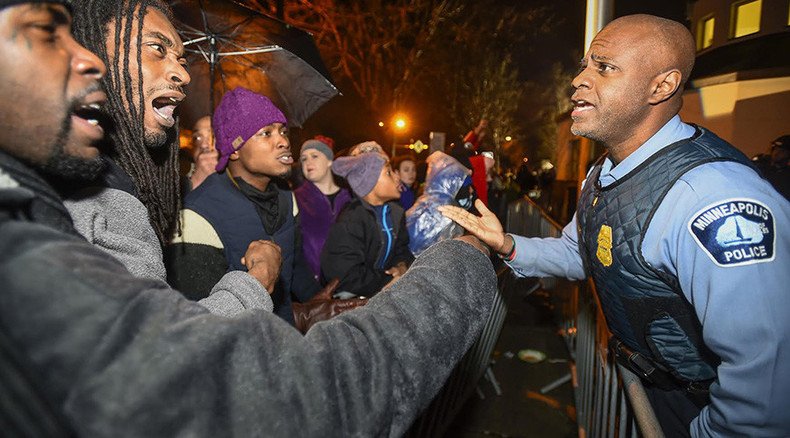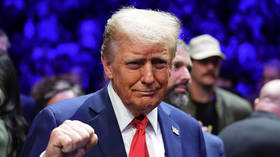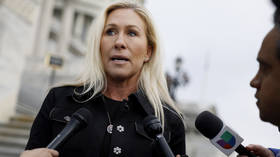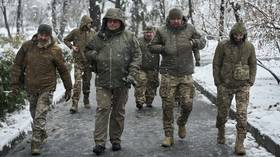Police use chemicals on protesters as officers who shot Jamar Clark in head named

Minneapolis police said they deployed chemical irritants to disperse activists protesting the death of Jamar Clark, killed by officers who have now been named. As details emerge, officials say Clark provoked the shooting when he tried to disarm a cop.
The death of Clark, who was shot in the head by a white police officer, triggered mass protests that lasted through Wednesday afternoon, when police broke up the activists’ makeshift camp outside the department’s Fourth Precinct, citing safety reasons.
“The decision was made to remove people who were blocking the entrance and covering the security camera within the vestibule,” Police Chief Janeé Harteau said at a news conference. “We also received multiple complaints from residents who were unable to gain entry to speak with our officers and investigators.”
mace, confusion as police spray large crowd outside 4th precinct #JamarClarkpic.twitter.com/Y0qEtW8Ig4
— bengarvin (@bengarvin) November 19, 2015Police said they used chemical irritants against protesters outside the station’s main entrance, forcing them to move to the sidewalk. Law enforcement then surrounded the building in order to protect it from further protests. Officers dismantled the camp, throwing away blankets, food, and books in large plastic bags.
Activists threw bricks and rocks, causing damage to police cars and lightly injuring several police officers. About 20 officers in riot gear or dressed in fatigues stood behind the barricades police had set up, while hundreds of supporters remained at the scene until later in the evening.
Here's more video of @MinneapolisPD NOT macing protestors. #Justice4Jamar#4thPrecinctShutDown#JamarClarkpic.twitter.com/YCtSmjrWOP
— D (@Delo_Taylor) November 19, 2015Four days after the fatal shooting, the Minneapolis police union finally released the names of the two officers involved in the case, satisfying one of the key demands listed by the activists who have been rallying for justice in the case for days.
The Minn Police just shot out sev rounds of "Marking Bullets" into the crowd. Escalation #Justice4Jamar#JamarClarkpic.twitter.com/t7tsPSBFwX
— ✊ #StreamTeamNews ✊ (@SMoKeeGyRL) November 19, 2015The two officers are Mark Ringgenberg, 30, and Dustin Schwarze, 28, both seven-year veterans who have been serving with the Minneapolis police force for the past 13 months.
While neither Ringgenberg nor Schwarze have had any disciplinary action taken against them since joining the department, the Star Tribune revealed that both of them have faced federal lawsuits in their careers. In 2012, Ringgenberg was sued in federal court for allegedly roughly treating a suspect resisting arrest. Schwarze faced a federal lawsuit for apparently using false arrests and threats to force a man to become a police informant in 2009. The lawsuits were dismissed in both cases.
Folks are holding a line protecting ppl from the police #4thPrecinctShutDown#JamarClark#Justice4Jamarpic.twitter.com/pk5V5tmp8J
— Black Lives MPLS (@BlackLivesMpls) November 18, 2015
Both officers have been on standard paid administrative leave since the shooting of Clark took place.
On Wednesday, police union president Lieutenant Bob Kroll once again stressed that Clark was not handcuffed when the officers fired. Witnesses and activists initially claimed that the 24-year-old black man was handcuffed and unarmed. Investigators agree that Clark did not have a gun. However, as more light is shed on what transpired, police now say that Clark was shot only after he allegedly tried to grab one of the officer’s guns.
Rubber bullet fired tonight.
#Justice4Jamar#4thPrecinctShutDownpic.twitter.com/E4l4EuVxXv
— Lightskin Tyreese (@thekingjobe) November 19, 2015Earlier this week, the state’s Bureau of Criminal Apprehension said it was collecting all possible video taken at the scene in order to determine the sequence of events. So far, no footage has shown the incident in its entirety, investigators said on Tuesday.












